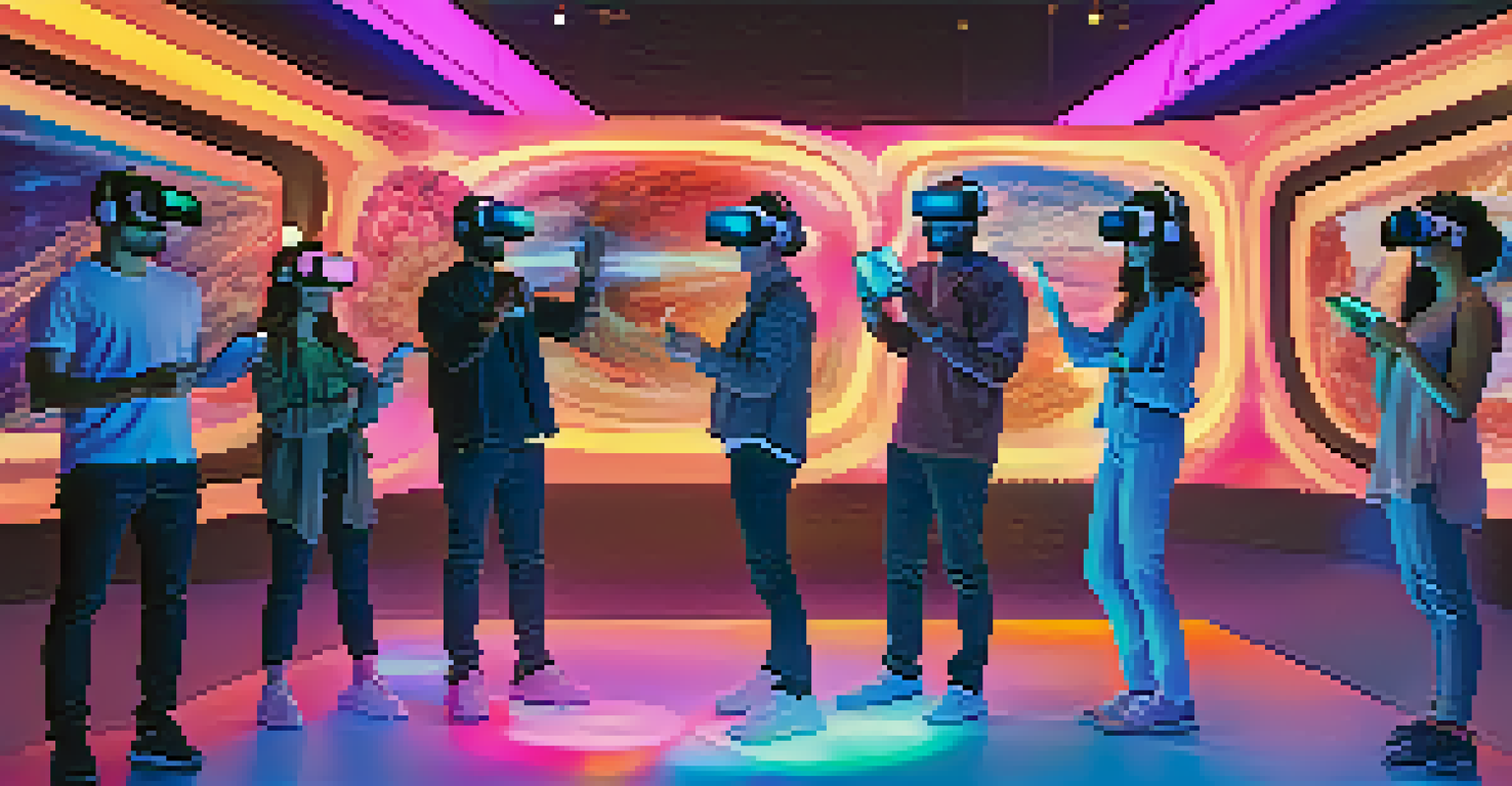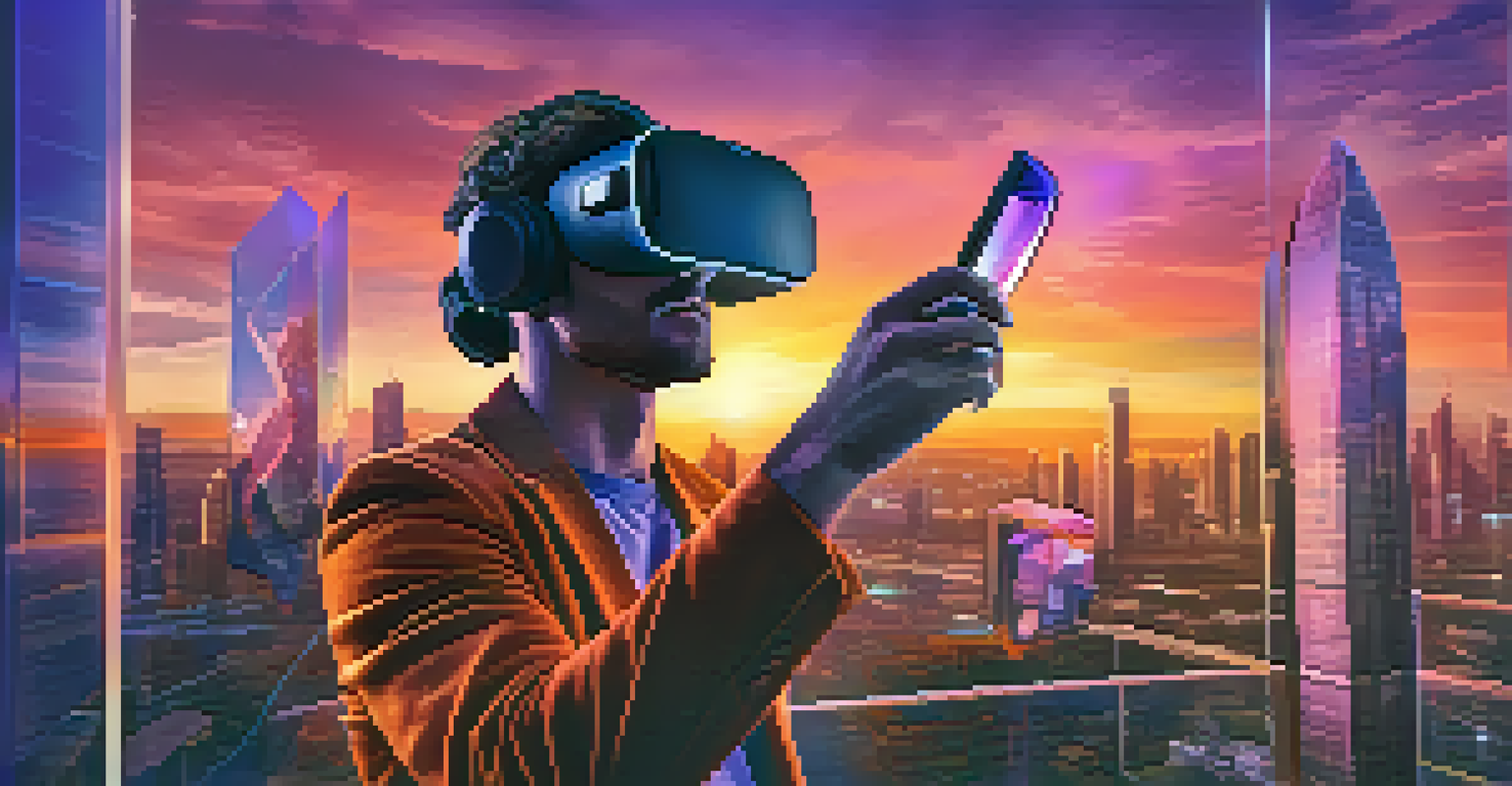Understanding Virtual Reality: A Comprehensive Beginner's Guide

What is Virtual Reality and How Does It Work?
Virtual reality (VR) is an immersive technology that creates a simulated environment, allowing users to interact as if they are in a real-world setting. By wearing a VR headset, you can experience digital worlds that feel incredibly lifelike. This technology uses a combination of hardware and software to track your movements and adjust the visuals accordingly, making the experience engaging.
Virtual reality is not just a new way to experience games; it's a new way to experience reality itself.
At its core, VR relies on sensors that detect your head and body movements. These sensors help create a 360-degree view, so when you turn your head, the world around you shifts in real-time. It's like stepping into a different universe where you can explore, play games, or even learn new skills, all from the comfort of your home.
VR has evolved significantly since its inception, with advancements in graphics and interactivity enhancing the user experience. Today, you can find VR applications in gaming, education, therapy, and even virtual tourism, making it a versatile tool for various fields.
The Different Types of Virtual Reality Experiences
Virtual reality experiences can be broadly categorized into three main types: fully immersive, non-immersive, and augmented reality. Fully immersive VR provides the most engaging experience, using advanced headsets and motion controllers to transport you into another world. Non-immersive VR, on the other hand, often involves a screen and may not provide the same level of interaction.

Augmented reality (AR) overlays digital content onto the real world, allowing you to interact with both virtual and physical elements. Think of Pokémon GO, where you catch virtual creatures in your actual surroundings. These different types of VR experiences cater to various preferences and use cases, from gaming to professional training.
VR Enhances Learning and Empathy
Virtual reality provides immersive experiences that improve learning retention and foster empathy by allowing users to experience different perspectives.
Each type of VR offers unique advantages and challenges, so it's essential to understand what you're looking for. Whether you want the full immersion of a VR game or the subtle enhancement of AR, there’s a virtual experience suited for everyone.
Essential Equipment for Virtual Reality
To dive into the world of virtual reality, you'll need some essential equipment, primarily a VR headset. There are various options available, from standalone headsets like the Oculus Quest to tethered devices that connect to a PC, like the HTC Vive. Each type has its pros and cons, so consider your budget and space before making a choice.
The future of virtual reality is not just about individual experiences but creating shared moments in the digital realm.
In addition to a headset, you may also need motion controllers or gloves to enhance interactivity. These devices allow you to manipulate virtual objects and control your movements, making the experience even more realistic. Some setups may require additional sensors for tracking, especially in room-scale experiences where you can walk around.
Lastly, don’t forget about sound! High-quality headphones can significantly improve your immersion by providing spatial audio that makes you feel like you're really inside the environment. With the right equipment, you can unlock the full potential of virtual reality.
Popular Applications of Virtual Reality
Virtual reality is not just for gaming; it has found applications across various industries. In education, VR can transport students to historical events or distant planets, making learning engaging and memorable. Medical professionals use VR for training simulations, allowing them to practice procedures in a risk-free environment.
The entertainment industry has embraced VR as well, with experiences ranging from immersive theater to virtual concerts. Imagine watching your favorite band perform live from the front row, all while sitting in your living room! This new way of experiencing entertainment is reshaping how we enjoy events.
Diverse Applications of VR Technology
Beyond gaming, VR is transforming industries like education, healthcare, and real estate by offering innovative solutions and experiences.
Even in real estate, VR is changing the game by allowing potential buyers to take virtual tours of properties without leaving their homes. As technology continues to advance, the possibilities for VR applications are virtually limitless.
Key Benefits of Using Virtual Reality
One of the most significant benefits of virtual reality is its ability to provide immersive experiences that can enhance learning and retention. When users are actively engaged in a VR environment, they are more likely to remember information compared to traditional learning methods. This makes VR an effective tool for education and training.
Additionally, VR can foster empathy by allowing users to experience situations from different perspectives. For instance, VR experiences simulating the life of someone with a disability can help users understand their challenges better. This can lead to increased awareness and compassion in various social contexts.
Lastly, VR offers a safe space for people to explore and practice skills without real-world consequences. Whether it's training for a high-stakes job or overcoming a phobia, VR provides a controlled environment to experiment and learn.
Challenges and Limitations of Virtual Reality
Despite its many advantages, virtual reality does come with some challenges and limitations. One significant hurdle is the cost of high-quality VR equipment, which can be a barrier for many potential users. While prices have been decreasing, a decent setup can still require a notable investment.
Another challenge is the potential for motion sickness, which some users experience when the virtual environment does not align with their real-world movements. This can be disorienting and may limit the amount of time someone can spend in VR. Developers are continually working on improving the technology to minimize such issues.
Challenges in VR Adoption Persist
Despite its advantages, VR faces challenges such as high equipment costs, potential motion sickness, and a learning curve for new users.
Lastly, there’s still a learning curve when it comes to using VR technology. For those unfamiliar with it, navigating virtual environments can be tricky at first. However, with practice, most users quickly adapt and start enjoying the immersive experiences VR has to offer.
The Future of Virtual Reality Technology
As technology continues to evolve, the future of virtual reality looks promising. Innovations in hardware, such as lighter headsets and improved graphics, are making VR more accessible and enjoyable for everyone. We can expect to see even more realistic environments and interactive experiences that blur the lines between the virtual and real worlds.
Moreover, as VR becomes more mainstream, industries are likely to explore new applications that we can't even imagine yet. From virtual workplaces to advanced training simulations, the potential for VR to transform various sectors is immense. Companies are already investing in research to harness its full capabilities.

In addition, social VR platforms are emerging, allowing users to connect and socialize in virtual spaces. This shift could change how we interact online, providing a sense of presence and community that traditional social media cannot offer. The future of VR is not just about individual experiences; it's also about creating shared moments in the digital realm.